The Aunt’s Story is divided into three sections. The first section, ‘Meroé’ recalls Theodora Goodman’s life in Australia from her period as a young girl until her mother’s death, which finally frees her to live a life of her own. The second section. ‘Jardin Exotique’ covers Theodora’s time in France, living in the Hôtoel du Midi with a cast of strange guests. The title of this part refers to the cactus garden attached to the hotel. The third, shortest section, ‘Holstius’, narrates the period after Theodore leaves the hotel to return to Australia, but instead decides to leave her train to head into the hills of New Mexico.
Having previously read several Patrick White novels (Riders in the Chariot, The Tree of Man, Voss and The Twyborn Affair) I was perplexed to find myself somewhat disengaged with this one. My problem with the novel came in the second part, which is strangely disjointed and sometimes confusing. My initial impressions, as I backtracked and reread sections, searching for narrative clues to explain the disconnected progressions from one scene to another, was that the book was experimental, obscure and possibly weakened by a lack of a compelling (or coherent) narrative: that the second part of the book is possibly not connected to the first part of the story. There may be some justification in this. White used an unpublished novel as the basis of The Aunt’s Story, so one might argue that this accounts for the jarring differences in the first and second parts of the novel.
My initial impressions seem common. I found with a quick search on the internet, that there was a shared feeling of dismay among many readers, of boredom and even antipathy. However, I was also intrigued by other readers who thought the book brilliant. Added to their voices is the appraisal of American reviewers who, at the time of the book’s publication, heaped praise upon it. Here, in Australia, White’s home country, however, the book was mostly met with indifference. It sold poorly. It was eventually remaindered. In fact, it didn’t do well until a decade later when White had made his reputation with subsequent novels like The Tree of Man and Voss. White felt despondent over The Aunt’s Story’s reception in his home land and felt discouraged to write. The Aunt’s Story had been his first book in over five years. He had served in the Air Force in Europe during World War II, and had written nothing but factual correspondence during that time.
The first part of the novel is an engaging character study. The first sentence is easy to underestimate because of its succinctness: But old Mrs Goodman did die at last.
Immediately we sense the relief that her death brings, its long anticipation, the long-withered relationship and the interminable wait suggested by that But
. In that first sentence we already understand that this will be a story of an adult child who will now face the challenge of living an independent life. After the first chapter – once Theodora’s sister and brother-in-law arrive with their three children – the story returns to Theodora’s own childhood and its sense of isolation and rejection, her period in school, and her emerging awareness that she must take a place in the world, if not following the expectations placed upon her to be a wife, then something else; an aunt. And finally, the narrative develops the slowly developing antipathy between Theodora and her mother, leading to her mother’s eventual death. It’s an identifiable story and it is told with skill.
But The Aunt’s Story soon breaks with the conventions of factual writing and linear narrative and alternates between fact and fantasy, illusion and reality in its second section. Theodore Goodman, having broken free of the conventions of her small life in Australia – looking after her mother and avoiding marriage to unsuitable men – is finally free to make herself when she travels to Europe. I would say that this is a unifying theme within the novel; that of identity. Theodora’s sense of self has been eroded by her domineering mother. Theodora is the ugly one, her sister Fanny, lovely. Theodora remains a spinster while her sister marries Frank Parrott, the man Theodora is secretly drawn to. Theodora bangs the keys of the keyboard in her own way while Fanny plays beautifully. Meanwhile, Theodora’s accomplishments – she is a crack shot with a rifle – are derided by her mother. But as readers, we are encouraged to side with Theodora. It is Theodora who has the dark eyes with the unanswerable questions
while her sister would always ask the questions that have answers
;answers that could have been found at the back of the book.
This first section of the novel, as much as it is about anything, reveals a character yet unformed. Unlike sculpture, fixed in position, Theodora’s identity is like music, flowing and everchanging.
White’s resistance against pressure to change the title – his American publishers wanted to call it ‘Theo’s Story’ – is revealing of the issue of identity. If Theodora is not a wife, she is at least an aunt to Lou, her sister’s daughter, and later to Katina at the Hôtoel du Midi, who asks her to accept that role. The story is largely about Theodora’s becoming. When she attends Spafforth’s finishing school in the first section of the novel we are told Thedora Goodman had begun to take shape
but her inexperience makes her incomplete. When she looks into the mirror, she sees a face to which nothing had yet happened, it could not take its final shape. It was a vessel waiting for experience to fill it, and then the face finally would show.
In the later part of the novel Holstius, a man who is seemingly a creation of Theordora’s own mind, tells her:
We are too inclined to consider the shapes of flesh that loom at us out of mirrors, and because they do not continue to fit like gloves, we take fright and assume that permanence is a property of pyramids and suffering. But true permanence is a state of multiplication and division. As you should know, Theodora Goodman. Faces inherit features. Thought and experience are bequeathed.
It is this problem of identity and experience I believe which makes the middle section of the novel a difficult read. White’s narrative now changes. No longer is it a relatable plot but now a lived experience; the subjective experience and response of Theodora’s relationship with the people of the hotel and the wider backdrop of the second World War. David Marr, White’s biographer, sums it up nicely:
Theodora becomes the people she encounters. The writing shifts from the present to the past, from lives lived to lives imagined by the exiles in the hotel. Theodora Goodman discovers, invents and enters their lives, drawing on her small store of experience and a deep well of intuition.1
This is the challenge of the second part of the novel. From the conventional narrative of the first part the reader is now immersed in a disorientating narrative in which incidents don’t clearly follow and character relationships are sometimes unclear. It’s a style, one might say when feeling negative about the novel, is more attendant to art than the reader. It is here that White’s influence from Modernist writers like Woolf is apparent, with his playful use of perspective and temporality. Some scenes in the novel would benefit from stage or film treatments as present realities morph into past scenes or Theodora’s imagination enters the lives of other hotel guests. General Sokolnikov, for instance, forms a close relationship with Theodora by casting her as his dead sister, Ludmilla, who died years ago in the forests of Russia.
In one scene Theodora sits talking in a room with the General. They signal that they must soon go somewhere and appear to enter a forest where they meet Anfisa and Petya, Russian revolutionaries. Theodora assumes the identity of Ludmilla Sokolnikov when speaking to Anfisa, as though giving a false name, but later in the scene it becomes clearer that the General and Theodora have entered this past memory together and are in fact still sitting in the room. When the general repeats himself in the story Theodora stops him to point out that he has signalled this part of the story seven times. Conversation, Ludmilla,
he replies, is one indication of reality.
Even so, the general (who is no general at all, having only ever risen to the rank of major) rails against Madam Rapallo, an American adventuress
, also an imposter
who has fashioned for herself a false life that includes her daughter Gloria, the Principessa
and her incredible marriage, thereby cushioning her experiences in European society. Connected to the problem of identity then, is the issue of illusion and reality.
White’s writing, nevertheless, is precise, his imagery evocative and the novel well-structured, despite initial impressions. It is only upon a second perusal that one begins to see the work of a craftsman. How, for instance, does one not first see the implications of the instances of madness and murder that pepper the novel? Old Mr Lestrange, who hid away at madman’s folly anticipates the final section of the novel when Theodora finds the house of Holstius, where Theodora’s own madness is unequivocally revealed. Theodora’s sister buys a house with her husband Frank which has a dark history. It’s former owner, Mr Buchanan, opened his veins with a razor
. Jack Frost, unhinged by the war
cuts the throats of his wife and three little girls. All this anticipates the death of Theodora’s mother. She dies on the morning of a a vile murder in Cremorne
, a morning the colour of zinc.
It’s an odd description except that White has linked this murder to Theodora’s own temptation to murder her mother through the repetition of a word: She threw back the thin knife, which fell and clattered on the zinc.
Her mother’s death is an ersatz murder. The fact that Theodora has not drawn blood is immaterial to her: I am guilty of a murder that has not been done.
In writing like this, White asks a lot of his reader, rewarding slow reading and re-reading of this layered narrative.
The difficulty of the novel lies also in understanding not only what is happening in the present, what is imagined and what is real, but which characters may be projections of Theodora’s mind. There is reason to suspect that some members of the hotel – Katina and Wetherby for instance – may have no reality beyond Theodora’s imagination, and this suspicion is further supported by the clearly imaginary Holstius of the last part of the novel. As Holstius states, Theodora’s problem lies in reconciling the life she leads with the imaginary life that is the construct of her own self. Theodora does not live in one reality or even in one temporality, but lives several lives that in more prosaic terms border on madness.
But White’s story also underscores a wider reality that pervaded Europe in the years before he began writing. Having been stationed in Europe while serving in the Air Force, White was exposed to events that remained remote for other Australians. White peppers his novel with references to communism, fascism, with Mussolini and Hitler, as well as the preceding madness of the First World War which destroys the sanity of Jack Frost. When White considered the poor reception of his novel here in Australia, he reasoned that Australians’ difficulty with the novel lay in the country’s relative isolation from the events of Europe. In a letter to Jean Scott Rogers White said:
There are certain states of mind that one does or does not apprehend, just as one does or does not respond to pure music or abstraction in paint. Rational explanations don’t help. So even if I went, step by step, explaining this piece and that, I still don’t feel you would accept my contention that lunacy is richer than reason in a world in which reason has become lunatic.
Nevertheless, having read the novel, my feeling is that is wasn’t as pleasurable an experience as others have found it. As always, White’s insights and language are to be enjoyed, but there is also a feeling upon finishing it that the story and characters are elusive: that there is an intellectual detachment in the writing that does not accommodate its reader. Detachment seems necessary, also, when appraising the novel. To some degree there has to be a disconnect between the reader who understands and appreciates a writer skilful at his craft, and that other reader sitting alongside who wants to enjoy the story the first part of the novel offered. That opinion might change if I reread the novel as others have recommended. But I think for many readers, the book will be frustrating or boring or disappointing or too obscure. This is a well-crafted novel, but it is a book that can only be recommended to readers with a love of language, with patience to connect the layers of the story, to understand its various realities, and a desire to contemplate what Theodora Goodman’s journey means to them.
Related Review
References

 RSS Feed
RSS Feed Facebook
Facebook Instagram
Instagram YouTube
YouTube Subscribe to our Newsletter
Subscribe to our Newsletter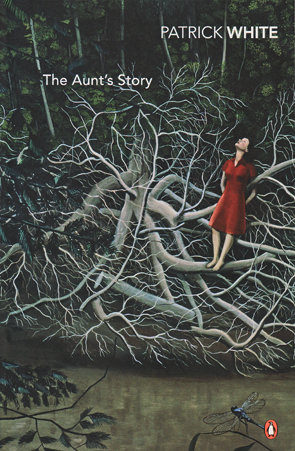

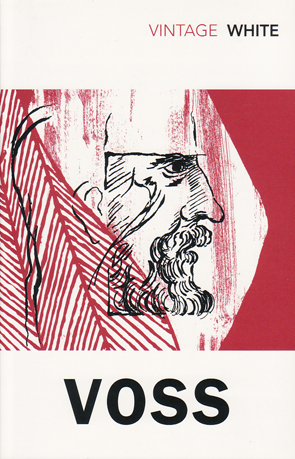
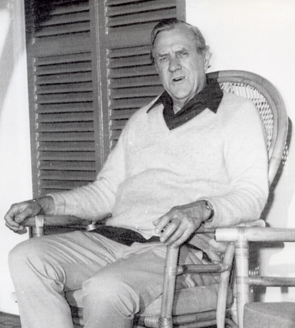
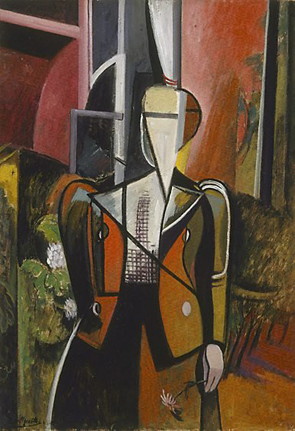
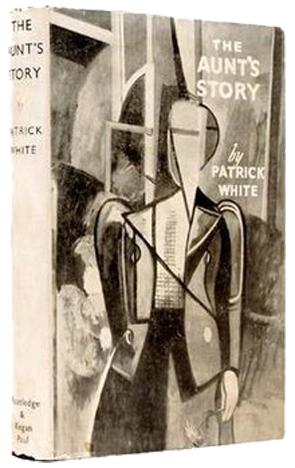


No one has commented yet. Be the first!